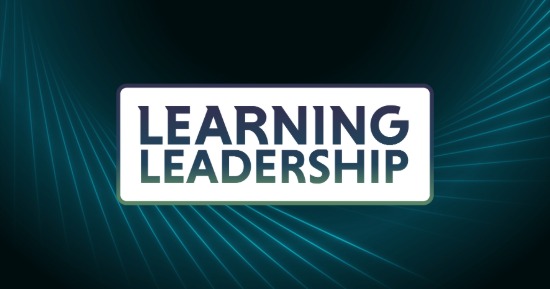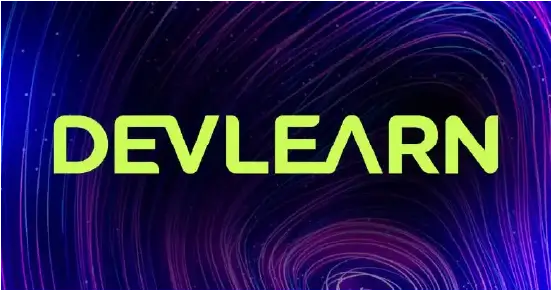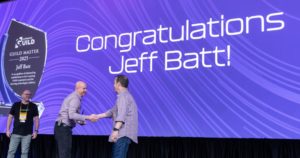As learning leaders focus on upskilling workers to proactively fill anticipated skills gaps, they might want to consider a broader strategic framework: Career enablement or people enablement.
What is career enablement?
A career enablement approach essentially melds upskilling initiatives with an organization’s strategic planning.
When planning an upskilling or reskilling program, learning leaders:
- Examine current job roles and the skillsets they use
- Study technology and industry trends
- Anticipate how skills needs will change
- Define the new skills employees will need in their current jobs (for upskilling)
- And identify roles that employees whose jobs will become automated or disappear could move to—and identify skillsets for reskilling candidates
This is a highly recommended approach to proactive training that keeps the workforce relevant and up-to-date on essential skills. Reskilling and upskilling programs invest in employees which increases their performance and also their investment in the company, reducing employee turnover and building a workforce with deep knowledge of and history with the organization.
Upskilling plus
A career enablement focus does all that … and more. By zooming out a level, career enablement fosters growth and development for teams, divisions, or the organization as a whole, moving the organization toward learning maturity while also accelerating individuals’ professional and personal development.
Its also entails a significant shift in workplace culture, moving emphasis from annual performance goals to broader career progression goals. In some organizations, a career enablement emphasis includes dumping annual performance reviews in favor of employee-initiated career development planning.
Stephanie Flory described the program she implemented at ManTech like this in a recent Chief Learning Officer article: “The rationale for this shift from annual performance reviews and a promotion-based career culture is simple: We want to help employees develop a more personalized career path and give managers and corporate leadership insight into where employees want to go within the company.”
How to deploy strategic career enablement
The key to success of a career enablement strategy is letting employees take the wheel. That goes beyond offering self-directed training materials, empowering employees to create and collaborate on creating resources, and providing high-quality curated content and resources for employees to use for exploration and in-depth learning—though all of those are essential.
A strong learning culture is also a basic building block: If employees do not feel that they can set aside time as a regular part of their work day or work week to pursue development goals, then the talk of career enablement is just that: talk.
Changing minds and mindsets
With those foundations in place, the next step is getting employees to take responsibility for their own development. In many organizations, where manager-set performance targets have been the yardstick by which employees have been evaluated and rewarded, that’s a big leap.
Learning leadership is essential here in guiding both managers and their employees toward a new framing of learning opportunities, job roles, and career planning. A good place to start is seminars or interactive discussions focused on the mindset shift itself.
Employees might also need individual guidance from learning leadership. Learning leaders can help employees figure out what they’d like their career path to look like and how to fit those goals into the larger organizational strategy.
Learning leadership can be instrumental in helping managers and employees identify individual or team strengths, development needs, and potential changes in job role needs and skillsets, as well as understanding what is possible.
A key step for learning leadership and managers is convincing learners that they can and should dream big and think about soft skills that could expand their career potential, as well as other “leading-edge” skills—which will be different at every level and in every role—as potential development goals.
Learning how to learn
When the focus shifts to building skills and developing individuals’ potential, learners may not know what’s available beyond the familiar eLearning or microlearning courses they’ve completed in the past and maybe static resources on a curated training site. They’ll need education on how, what, and where to find relevant and engaging learning opportunities.
Managers may need coaching or training on how to keep the conversation going with their direct reports—how to have career-focused conversations, how often to have them, and how to measure progress.
Leadership needed from managers and executives
A career enablement initiative might be largely driven by learning leadership and implemented by learners, but it’s not possible without support at every level. Career development efforts must be supported by executives who prioritize development of learning resources, facilitate allocation of time to learn, and reward employee development efforts with meaningful opportunities to apply new skills and abilities.
Managers need to truly be on board to convince their direct reports that not only are they allowed but they are encouraged to establish and pursue development goals. Managers can best demonstrate their sincerity by setting the example and pursuing their own development goals—and learning leaders can provide the coaching, resources, and guidance to help make that happen.
Managers are also ideally positioned to bridge between employees they know well—identifying strengths and untapped potential—and anticipated skills needs and advancement opportunities. Making those matches can be part of ongoing conversations between managers and their employees about career enablement goals and progress.
Higher-level executives, in concert with learning leadership, are able to identify strategic needs and prioritize development of training opportunities to meet those needs.
Refocusing the organizational culture around long-term career development can only happen with the full support and participation of leadership at all levels, including and especially learning leadership.
Explore leadership issues with your peers
Explore the strategies and skills required to navigate the needs of today’s ever-changing workplace with your learning leadership peers. Join the Learning Leaders Alliance, a vendor-neutral global community for learning leaders who want to stay ahead of the curve and for aspiring leaders wanting to build their skillsets.
The LLA and Learning Solutions are exploring issues that learning leaders face as their organizations adjust to the “new normal” in the Learning Leaders Global Online Forum, July 21–22, with sessions on upskilling, leadership skills, learning data, and more.
The Learning Guild’s Alliance Membership package includes access to exclusive digital events, including the Online Forum, as well as content curated for today’s modern learning leader, opportunities to attend in-person learning leadership events held around the globe, and more. See the details here.










